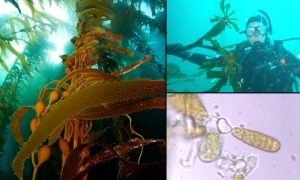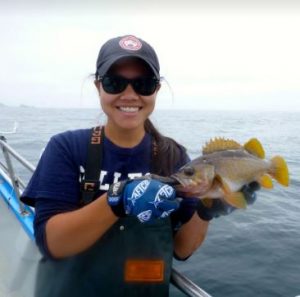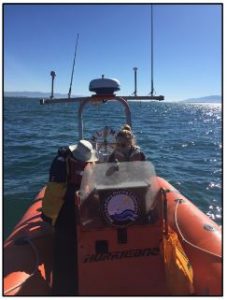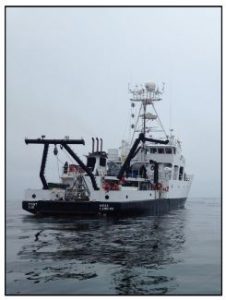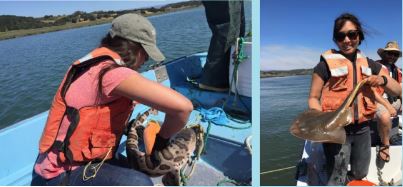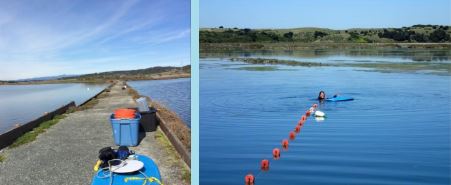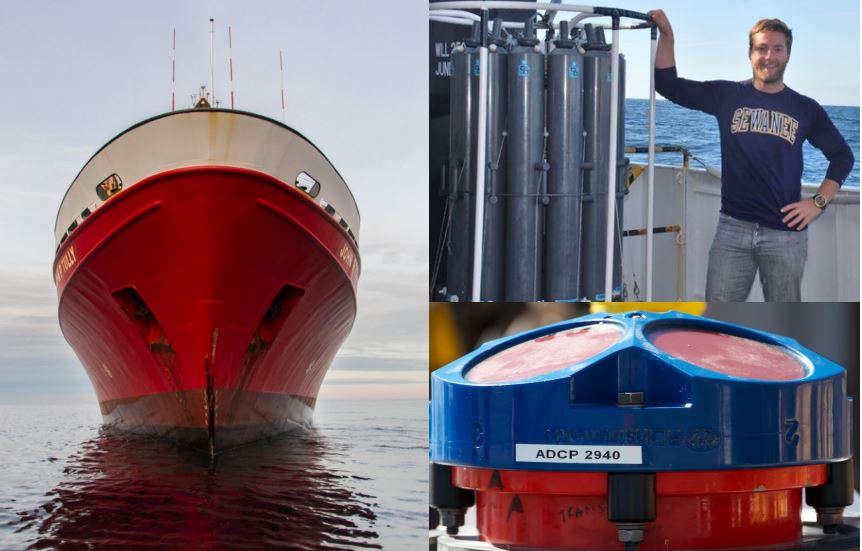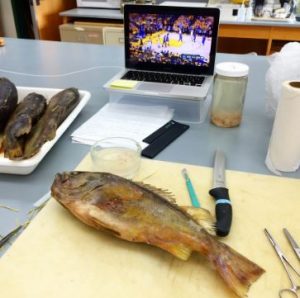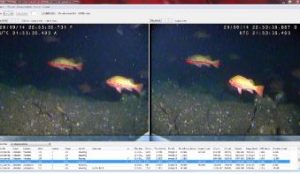By June Shrestha, MLML Ichthyology Lab
Congratulations to the twelve students that successfully defended their theses in 2018!
- Laurel Lam, Ichthyology
- Alex Olson, Chemical Oceanography
- Holly Chiswell, Chemical Oceanography
- Cody Dawson, Phycology
- Evan Mattiasen, Ichthyology
- Tyler Barnes, Geological Oceanography
- Catarina Pien, Pacific Shark Research Center
- Natalie Yingling, Biological Oceanography
- Drew Burrier, Physical Oceanography
- Jen Chiu, Fisheries and Conservation Biology
- Anne Tagini, Fisheries and Conservation Biology
- Suzanne Christensen, Phycology
Laurel Lam
Ichthyology
"Geographic and habitat-based variation in Lingcod (Ophiodon elongatus) demography and life history along the U.S. West Coast"
- Laurel looked at the geographic and habitat-based differences in Lingcod life history and population structure along the U.S. West Coast. Understanding how life-history (i.e. growth, maturity, mortality, condition) of fish can vary is important when accurately managing commercially- and recreationally- important fish stocks.
- She found that as latitude increased (as waters got colder) Lingcod grew slower, lived longer, and matured later than Lingcod from warmer waters. Furthermore, Lingcod from rocky, high-relief habitats grew faster, lived longer, and matured earlier than Lingcod from flat, low relief areas.
- Overall, differences in Lingcod life-history are strongly linked to environmental gradients of sea surface temperature and productivity. Management of Lingcod and other rockfish stocks need to be reflective of these biological differences if we want fish populations to be sustainably harvested in the future.
Alex Olson
Chemical Oceanography
"The biochemical behavior and speciation of mercury in the sea surface microlayer: implications for transport to watersheds via fog"

- Alex studied how neurotoxic methylmercury (MMHg) found in the ocean (and fish) came to be in marine California coastal fog. He focused on the sea surface microlayer (SML), the thin (10-100 microns) skin of the ocean that separates the marine environment from the atmosphere. This microenvironment is known to accumulate organic material and pollutants.
- Two years and four cruises later, Alex found that MMHg in this layer is 2-30x higher than methylmercury in the water below! This was the first time MMHg was measured in this layer and has implications for this neurotoxin spreading into the marine foodweb faster and or at a higher concentration.
- Alex then tested different types of marine aerosols (natural and synthesized) to see if their creation from the SML meant they transferred MMHg material into the atmosphere (and eventually measured in fog). He found that while these aerosols couldn’t explain all the MMHg in fog, they did contribute a substantial amount (~20%).
- Based on these measurements, much of the MMHg in fog could be coming from a
gaseous form of mercury (Dimethylmercury – DMHg) that breaks down under acidic atmospheric conditions.
Holly Chiswell
Chemical Oceanography
"Water Column Methylmercury Production in the California Current"
- The East Coast understanding of mercury cycling is well known, but West Coast cycling of mercury and it's eventual fate into marine advective fog needed to be better understood.
- Holly looked at water column processes that may contribute methylmercury to the California Current by way of a time series in the Monterey Bay, a 1-D advective diffusive model, lab experiments, and a sediment trap deployment.
- Sinking particles, including fecal pellets, may serve as microenvironments for methylation of mercury and contribute to the West coast cycling of mercury.
Cody Dawson
Phycology
"Phenology and the Response to Disturbance of the Fucoid, Stephanocystis osmundacea"
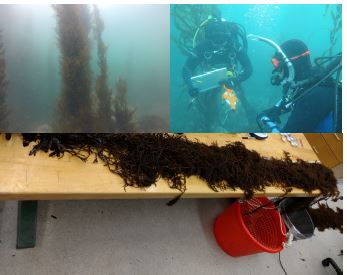
- Cody looked at the variability in biomass of a subtidal habitat-forming seaweed, the chain bladder kelp (not actually a kelp).
- Most biomass was related to the production of reproductive fronds during the spring and summer. Removal of these fronds caused an immediate dormancy response by the alga.
- Prolific, habitat forming seaweeds are key components of kelp forest ecosystems and understanding the physiology of these biogenic structure providers gives better insight into the ecology of these highly productive systems.
Evan Mattiasen
Ichthyology
"Effects of hypoxia on behavior and physiology of juvenile rockfish"
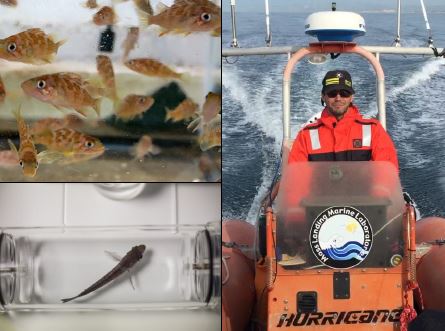
- This project was aimed at determining how exposure to reduced environmental oxygen conditions, under the context of climate change, effected the behavior and physiology of two species of juvenile stage temperate reef fish with differing early life history characteristics.
- The findings of this study indicate that both species express sensitivity to low environmental oxygen; however, the strength of responses differed between species.
- The differences expressed by each species suggest that acclimatization to changing ocean conditions may vary across closely related species, leading to winners and losers under future ocean conditions.
- Overall, increases in strength and frequency of coastal hypoxia events may have severe impacts on juvenile stage fishes that reside in kelp forests.
Tyler Barnes
Geological Oceanography
"Assessing Beach Variability & Shoreline Change in Monterey Bay, CA"
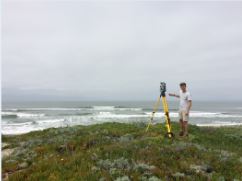

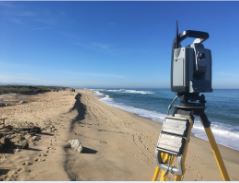
- The goal of Tyler's research was to use high-frequency mapping techniques to assess geomorphologic change at a Moss Landing beach.
- The beach was highly variable during winter (with both erosion and accretion) and comparably stable during summer. Winter variability revealed that an eroded beach is much more likely to accrete than erode over short timescales (days to weeks) and visa versa.
- Over decadal timescales the beach has oscillated between erosion and accretion, which may be linked to local submarine canyon dynamics or global teleconnection patterns.
Catarina Pien
Pacific Shark Research Center
"Changes in the elasmobranch assemblage in a California estuary"
- Catarina studied the sex/ life stage distribution of sharks and rays in Elkhorn Slough by season and zone, and looked at environmental variables associated with each species. She also looked at how species composition has changed since the 1950s.
- Leopard Sharks, mature Bat Rays, and male Thornbacks were more common closer to Monterey Bay, while female Thornback Rays and immature Bat Rays were caught throughout the slough. All three species seasonally migrated out of Elkhorn Slough during the wet season, likely due to changes in temperature and salinity.
- While Leopard Sharks and Bat Rays have remained common in Elkhorn Slough, Shovelnose Guitarfish have declined, and Thornback Rays are now one of the most abundant species. Thornback Rays are likely using Elkhorn Slough for gestation and mating.
- While species composition has not drastically changed over time, some changes have occurred on a decadal time scale, and overall diversity seems to have declined. As habitat and environmental conditions continue to change in Elkhorn Slough, it will be important to continue monitoring which species are common, and how they are evolving to changes in the estuary.
Natalie Yingling
Biological Oceanography
"ATP as a Quantitative Proxy for Living Microbial Biomass: Cellular ATP Content Under Stress"

- Natalie determined the time scale of when ATP starts to disappear in microbial communities, such as marine bacteria and phytoplankton, that are undergoing stress and dying as well as investigating what limits are necessary for ATP concentrations to go to zero.
- In the field, she examined how ATP measurements could be used to investigate various oceanography processes such as diel variation and grazing.
- Understanding the complexity behind ATP measurements of microbial biomass can help oceanographers know the details and the caveats of measuring ATP as an estimation of biomass.
Drew Burrier
Physical Oceanography
“The Internal Wave Dynamics of Barkley Submarine Canyon”
- Drew looked at the internal wave climate of Barkley Submarine Canyon off the coast of Vancouver Island.
- To examine these features, he used data from Ocean Networks Canada cabled-moored ocean observatories instrument platforms deployed on the bottom of the ocean. Analysis of these data showed that there is a significant amount of variability to the internal wave field that happens on seasonal time scales.
- He also saw that there was a demonstrable canyon effect to the data, meaning that where the instrument was located with in the canyon had an affect on the internal wave energy seen at key frequencies.
- Finally the vertical structure of the internal wave field showed significant variability, meaning that the closer to the bottom of the water column you looked, the higher the energy in the internal waves spectra at key frequencies.
Jen Chiu
Fisheries and Conservation Biology
"Diets and Stable Isotope Signatures of Yellowtail Rockfish (Sebastes flavidus) in Central California"
- Jen studied the diet of Yellowtail Rockfish (Sebastes flavidus) in 3 central California locations (Cordell Bank, the Farallon Islands, and Half Moon Bay) in 2013 and 2014 utilizing visual gut content analysis and stable isotope analysis.
- Yellowtail Rockfish diets are highly variable over short time and space scales. Their diets in these areas and during these years were feeding on a wide variety of semi-pelagic prey items including tunicates (like Salps and Pyrosomes), juvenile Rockfishes, Krill, amphipods, and Market Squid. The availability of these prey items in the water column is highly influenced by changes in oceanographic conditions.
- Yellowtail Rockfish is a commercially and recreationally important fisheries species, and is managed as two stocks by the Pacific Fishery Management Council, however, no stock assessments have been conducted for the southern stock (Cape Mendocino to Baja California). This study is the first to provide a robust description of this species' diet in the southern-managed stock, and has filled in data gaps for future ecosystem models.
Anne Tagini
Fisheries and Conservation Biology
“Predicting spatial distributions of demersal fishes off Central California”
- Anne looked at habitat associations of six demersal fish species in Central California and created models and maps predicting species density and biomass.
- Models using species associations with benthic habitat do a good job at predicting where we should expect to find fish. However, when comparing fish densities predicted one year to those observed the following year, observed densities were only 10-20% of predicted densities. Biomass estimates were seen to vary greatly depending on the resolution of the predictive map.
- Predictive models and maps are very useful in identifying habitat suitability. However, density and biomass estimates can be artificially high and are affected by map quality and map resolution.
Suzanne Christensen
Phycology
"Chemical competition between microscopic stages of Macrocystis
pyrifera and five native kelp species: does giant kelp always lose?"
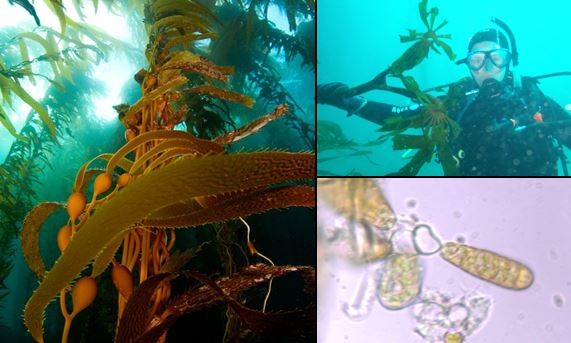
Congratulations to all! Readers: please check out the previous recent thesis defenses at the following links:


